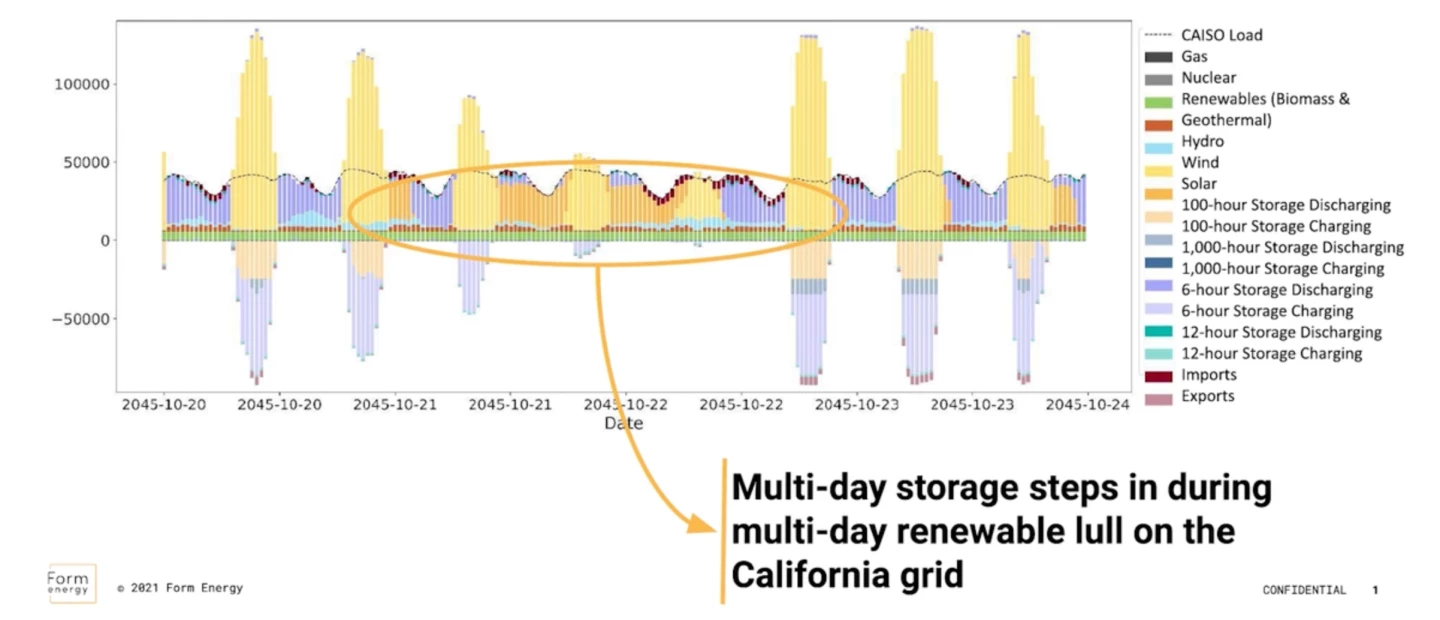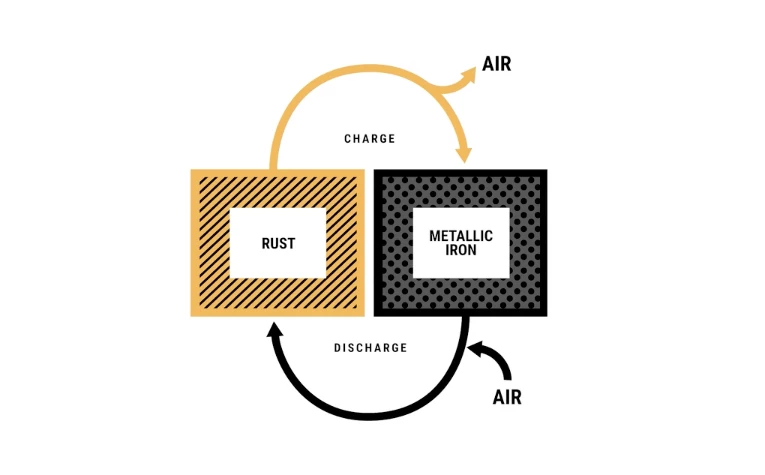Gates- and Bezos-backed startup Form Energy is one of the most exciting companies in the grid-level renewable energy storage space, with a multi-day iron-air battery system just 10% the cost of lithium. A 10-MW/1-GWh demo system has now been approved.
For large electrical grids to move toward 100% renewable energy, grid operators need clever, affordable, practical and eco-friendly ways to store up energy that's generated at inconvenient times, and then release it when demand is outstripping supply.
This needs to happen on different timescales; some of this grid smoothing needs to happen on a daily basis, and that's an area where lithium "big battery" projects are already doing a great job. But lithium is less suited to longer-duration storage; it doesn't like staying fully charged for days or months at a time, so other, slower, bulk storage options are being developed to buffer energy grids against multi-day bad weather spells and seasonal lulls in renewable generation.

Form Energy is working in the multi-day space, commercializing a relatively simple, modular battery solution based around the rust cycle of iron. Charging these washing-machine-sized battery modules up uses electricity to convert rust, or iron oxide, into metallic iron, and releases oxygen as a by-product. Discharging the batteries requires oxygen to be put back into the system, and turns the metallic iron to rust, releasing energy in the process.
Obviously, this reaction is slower than the instant, high-power discharge of a lithium battery. But it's quicker than you might think; a full discharge cycle takes about 100 hours, or a little over four days. That's right about the sweet spot for the kind of multi-day batteries cities will need to buffer against bad weather. Well, in some places. Sorry, London.
The advantages of an iron-air battery are simple and clear. Direct reduced iron is the cheapest form of iron available, and was previously mainly used in steelmaking. It's extremely abundant, and totally safe. So are water and air, the other two main ingredients.

These cells might take up some volume – you need about an acre (0.4 ha) of land for 3 MW of power generation, but they last for ages, and they're totally recyclable; you can pull the iron out again and easily sell it on. The result is a Levelized Cost of Storage (LCoS) that comes in at about 10% of a lithium big battery array per kilowatt-hour stored and released.
After announcing a US$760 million manufacturing plant in West Virginia earlier this year, Form Energy has now announced an impressive demonstration project: a 10-megawatt/1-gigawatt-hour system to be built on 5 acres (2 ha) of land near the Sherburne County Generating Station in Becker, Minnesota.
This location puts it conveniently close to Sherco Solar, one of the largest solar generating sites under development in the USA, with a total capacity of 710 MW when it's complete. The battery will be built on a site owned by Xcel Energy, a power company that operates several coal-fired plants, but that's already moved more than half its generating capacity to renewable sources.

This demonstration battery is a pilot for a program in which Xcel will begin using iron-air batteries to replace its coal-fired power plants, in a way that makes use of existing transmission infrastructure, but that should also keep energy release costs down to about what local grids are already paying for coal-fired grid-firming electricity.
“Multi-day battery storage has the potential to help us better harness the renewable energy we generate while ensuring the grid remains reliable for our customers,” said Bria Shea, a senior VP at Xcel, in a press release. “We look forward to bringing this system online at our Sherco site and learning more about the role it can play in our larger effort to reach 100% carbon-free electricity.”
Construction is set to begin next year, and the battery is slated to come online in 2025. This won't be Form's first grid-connected project; a smaller 1.5-megawatt system is planned with Great River Energy, also in Minnesota. Learn more in the video below.
Source: Form Energy via Recharge News









